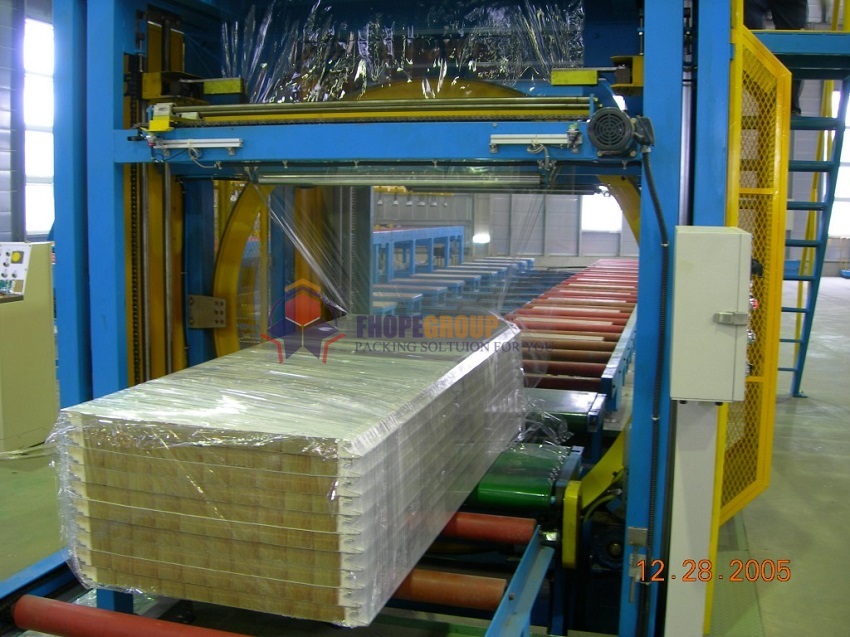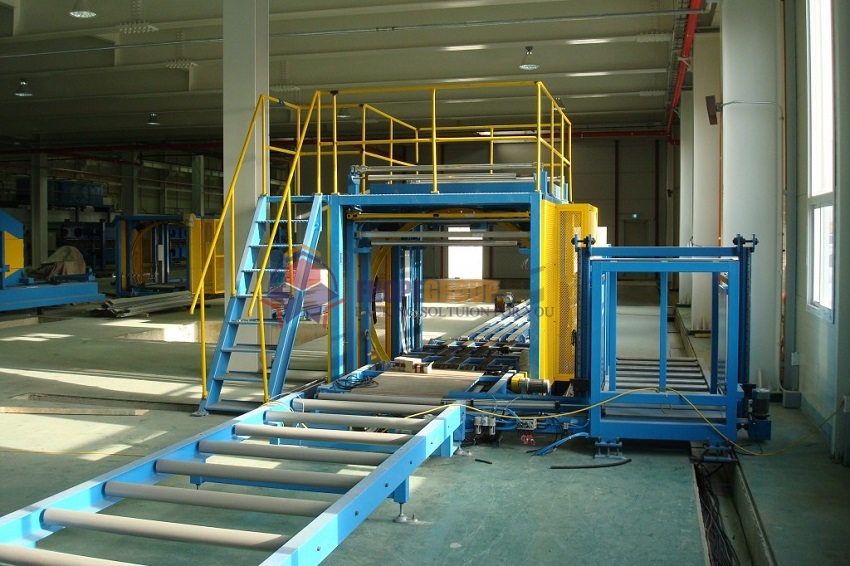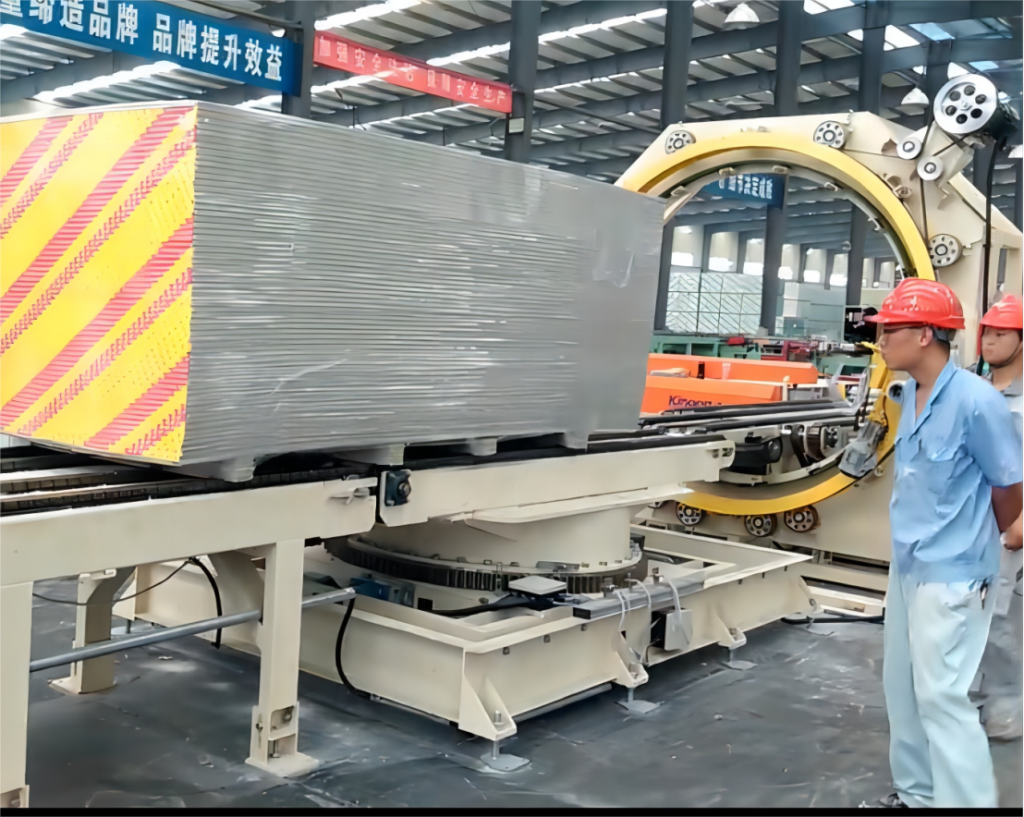Selecting the Right Orbital Stretch Wrapper for Panel Packaging

Efficiently packaging panels—whether wood, metal, plastic, or composite materials—is crucial for protecting them during handling, storage, and transportation. Orbital stretch wrappers, also known as horizontal wrappers, provide an effective solution by securely wrapping elongated or bulky products like panels. However, choosing the right orbital stretch wrapper for panel packaging requires careful consideration of several factors to ensure optimal performance, protection, and cost-effectiveness.
More information: http://www.fhopepack.com/Horizontal_wrapping_machine.html

Here are key considerations to guide your selection process for the ideal orbital stretch wrapping equipment:
Key Factors for Choosing an Orbital Stretch Wrapper
1. Panel Dimensions and Characteristics
- Size and Shape: The primary factor is the physical size (length, width, height) of the panels you need to wrap. Ensure the machine's ring diameter and conveyor system can accommodate your largest and smallest panel dimensions. Consider any irregularities in shape that might require specialized clamping or support during the wrapping cycle.
- Weight: The machine's conveyor and structure must be robust enough to handle the weight of individual panels or stacked bundles.
2. Production Throughput Requirements
- Volume: Evaluate your required packaging rate (e.g., panels per hour). High-volume operations necessitate machines with faster ring speeds, quicker cycle times, and potentially automated infeed/outfeed systems.
- Operating Schedule: Will the machine run intermittently or continuously? Continuous operation demands higher durability and reliability features.

panel shrink packing machine3、 3. Stretch Film Specifications
- Film Type and Gauge: Determine the appropriate stretch film type (e.g., cast, blown) and thickness (gauge) based on the level of protection, load containment, and puncture resistance needed for your panels.
- Film Width and Roll Size: The wrapper must be compatible with the required film width and accommodate standard industry roll diameters and core sizes. Pre-stretch capabilities (mechanically stretching the film before application) can significantly reduce film consumption and improve load stability – check the machine's pre-stretch percentage options.
4. Required Level of Automation
- Manual: Operator manually places the panel, starts the wrap cycle, and removes the panel. Suitable for low-volume applications.
- Semi-Automatic: Often includes powered conveyors for infeed/outfeed but may require manual initiation or film attachment/cutting. Balances cost and efficiency for moderate volumes.
- Fully Automatic: Integrates seamlessly into a production line with automated panel feeding, wrapping, film clamping/cutting, and panel discharge, minimizing labor requirements for high-volume scenarios.
5. Wrapping Performance Parameters
- Wrapping Speed: Usually measured in RPM (revolutions per minute) of the wrapping ring. This directly impacts cycle time and throughput. Ensure the speed is adjustable to match different product needs.
- Wrapping Tension Control: Precise control over film tension is critical. Too loose, and the load isn't secure; too tight, and it could damage softer panels. Look for systems offering adjustable and consistent tension application. Electronic controls are often preferred.
- Wrapping Pattern/Program: The ability to customize the wrap pattern (e.g., number of wraps at leading/trailing edges, overlap percentage) ensures optimal coverage and containment tailored to the panel type and stability requirements. Some machines offer programmable recipes for different products.
6. Safety Features
- Guarding: Adequate safety guards around moving parts (like the rotating ring) are essential to prevent operator injury.
- Emergency Stops: Easily accessible emergency stop buttons should be standard.
- Sensors: Safety sensors that detect obstructions within the wrapping zone can automatically halt the machine, preventing collisions or injuries.
7. Integration and Compatibility
- Line Integration: If incorporating into an existing production line, consider how the wrapper will interface with upstream and downstream equipment like conveyors, stackers, or banding machines. Communication protocols may be necessary for automated lines.
- Handling Equipment: Ensure compatibility with forklifts, pallet jacks, or cranes used for loading and unloading panels.

orbital stretch wrapper for panel 6 sides wrapping (3) 8. Power and Utility Requirements
- Electrical: Verify the machine's voltage, phase, and power consumption requirements match your facility's supply.
- Pneumatic: Some machines require compressed air for functions like clamping or film cutting; check pressure and volume needs.
9. Maintenance, Support, and Durability
- Ease of Maintenance: Consider the accessibility of components for routine maintenance and cleaning.
- Supplier Support: Evaluate the manufacturer's or supplier's reputation for technical support, service availability, and spare parts accessibility. Reliable support minimizes downtime.
- Build Quality: Assess the machine's construction materials and overall robustness for long-term industrial use.
10. Cost and Return on Investment (ROI)
- Initial Cost: Balance the purchase price against the features and capabilities offered.
- Operating Costs: Factor in film consumption (consider pre-stretch efficiency), energy usage, and maintenance costs.
- ROI Calculation: Evaluate the potential ROI based on labor savings, reduced panel damage during transit, increased throughput, and improved packaging consistency.

Conclusion
Selecting the most suitable orbital stretch wrapper involves a thorough assessment of your specific panel characteristics, production environment, performance needs, and budget. By carefully evaluating these key factors—from panel dimensions and required throughput to automation levels and safety features—you can invest in a panel packaging solution that enhances product protection, boosts operational efficiency, and delivers a strong return on investment. Taking the time to choose wisely ensures your panels arrive at their destination securely wrapped and damage-free.
